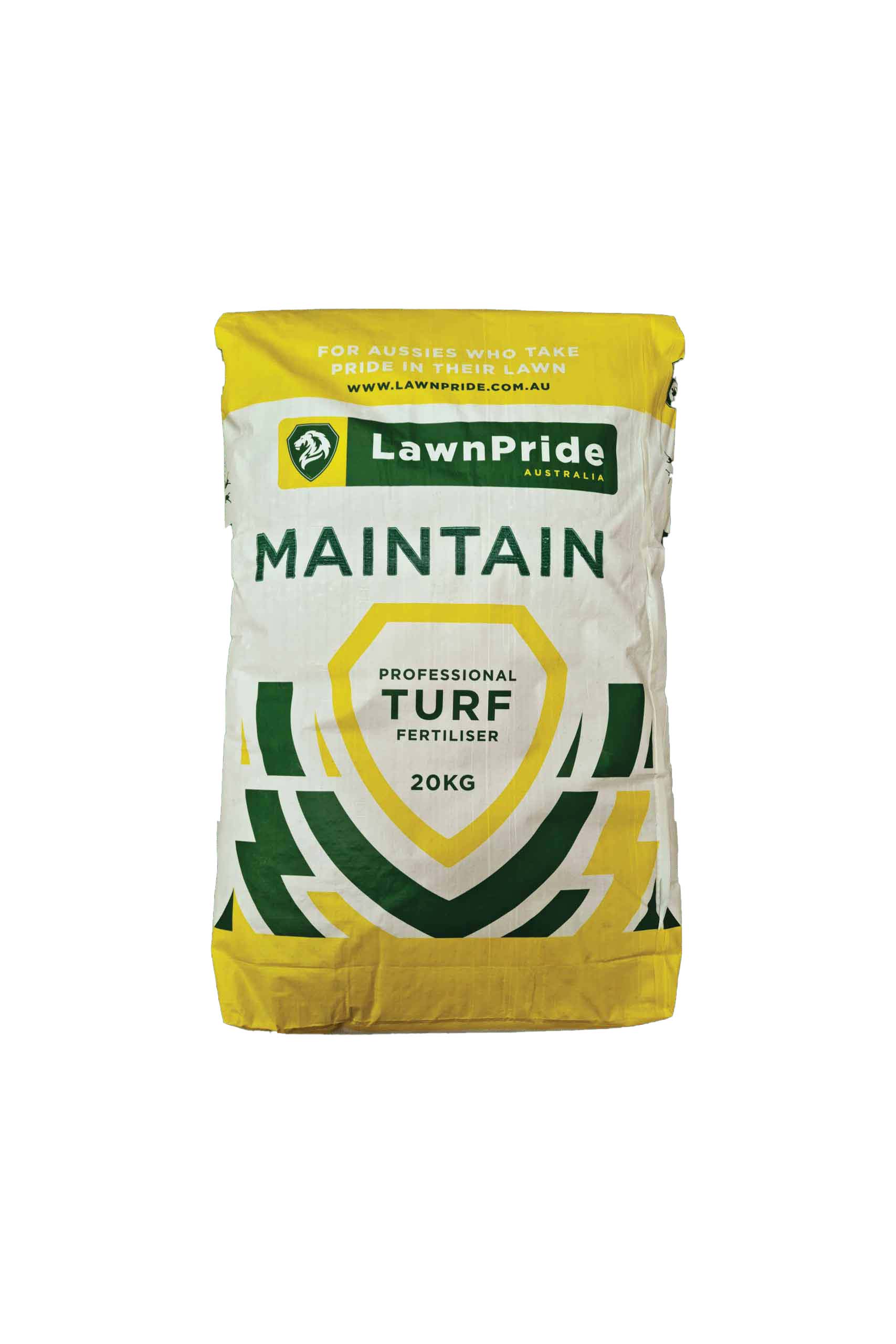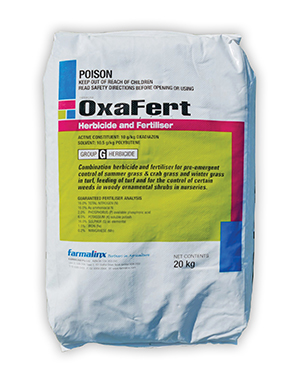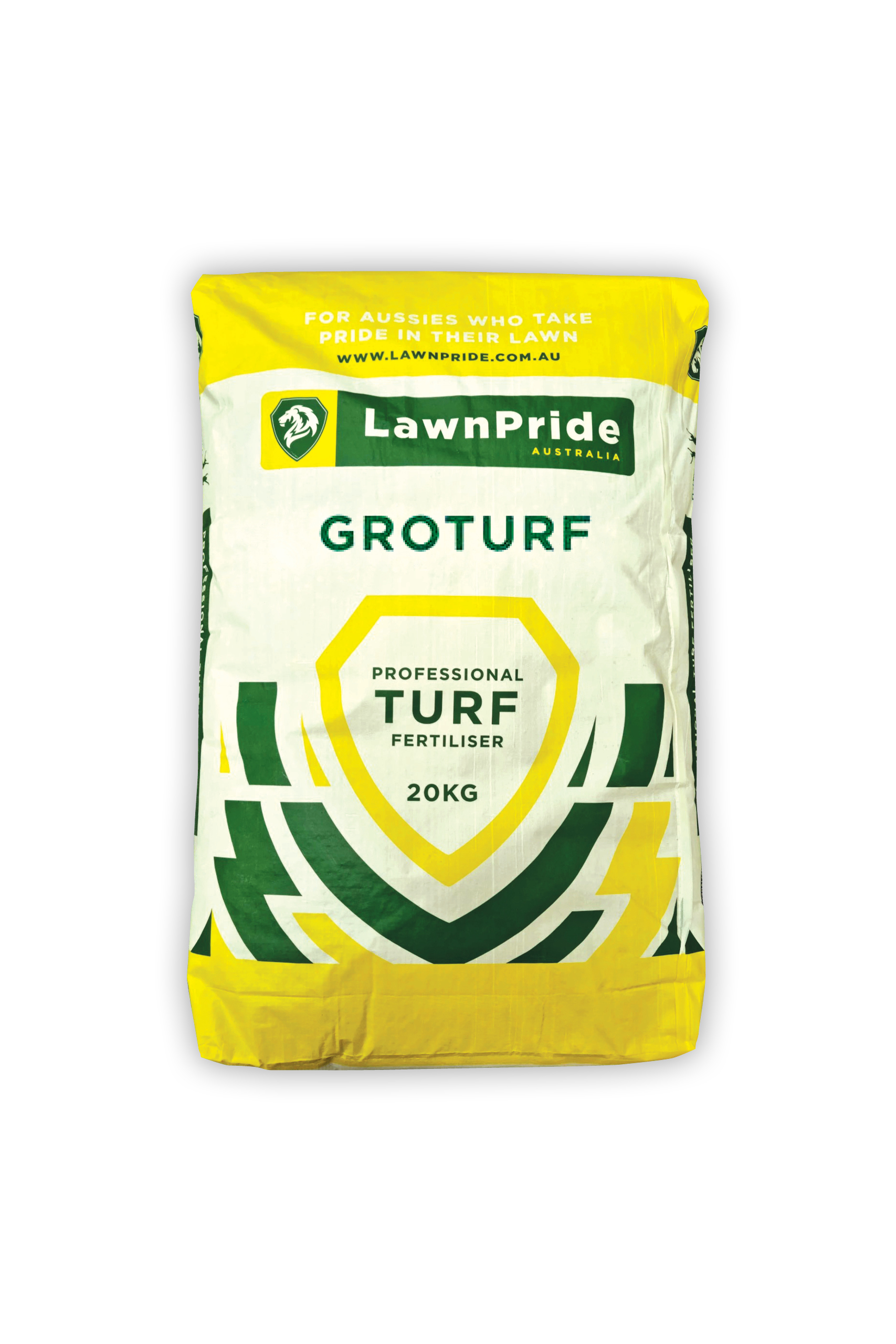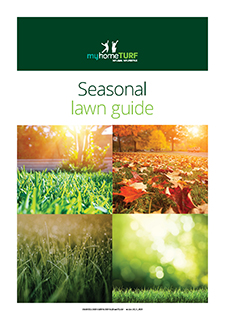Is it Okay to Fertilise Your Lawn After Mowing?
A beautiful, lush lawn is a source of pride for many homeowners. It not only adds to the aesthetics of your property, but also provides a functional space for outdoor ...

It doesn’t matter whether you’re fertilising Prestige®, Sapphire®, Palmetto®, or any of the other Buffalo grasses, the requirements for fertilising all Buffalo lawns are almost exactly the same as fertilising any other turf variety. Despite the myths, you do not need to pay more for a special Buffalo grass fertiliser.
The main reason Buffalo lawns lose their colour throughout the year is due to a lack of fertiliser, though other factors may also come into play, such as soil health.
Soft Leaf Buffalo grasses can become extremely pale when lawn fertilising is forgotten or neglected.
We recommend applying a quality lawn fertiliser based on the label’s application rates in the following months:
Switch to a quality winter fertiliser for the following months:
These fertilising schedules are suitable for standard grade lawn fertilisers.
It is important that you know what sort of grass you have before selecting a fertiliser. Always apply quality lawn fertiliser based on the label’s recommendations.
Liquid fertilisers have the benefit of being able to be applied to both the ground or to the lawn foliage itself, also called foliar application.
Application of liquid fertiliser through the ground will result in the roots absorbing the nutrients.
Application to the lawn allows the leaves to absorb the fertiliser and have the nutrients more readily available for immediate use.
The foliar application gives you the option of making mid-season corrections to add vital nutrients to your lawn if it didn’t get the correct mixture at the beginning of the season or if your lawn needs a boost.
Another main benefit of liquid lawn fertiliser is that it can be easily administered to the largest of lawns in a liquid form and absorbed, not only by the lawn foliage itself but also by the surrounding soil.
This is of great value to lawn care and while liquid fertiliser is commonly more expensive it can be more effective!
Again, the best fertiliser for your lawn is one that contains the nutrients your soil needs.
One of the advantages of using a liquid lawn fertilizer is that you can easily mix in any other nutrients your lawn and soil needs.
Whether you mix concentrate in a litre sprayer (the less expensive option) or purchase a pre-mixed bottle that attaches to your garden hose, lawn liquid fertiliser is more versatile than granular because you can apply it to the ground or the leaf foliage.
For a good selection of liquid fertilisers have a look at our online shop.
Most lawns respond well to a slow release fertiliser which can be found at the myhomeTURF online shop.
Using a slow release fertiliser on your lawn once during autumn before the ground becomes too cold.
Application of your slow release fertiliser should occur during late March or early April (when the weather is still warm).
Another benefit of a slow release fertiliser is that a consistent level of growth and greening occurs across the life of the application with no spike in growth and no nutrient-run off.
It is important not to use cheap slow release fertilisers as these products tend to initially release a lot of nutrients and dwindle off quickly with nutrient delivery, resulting in an initial surge in growth and greening – however, consistent growth will not be maintained.
Traditional lawn fertiliser is often the cheapest lawn food choice but not necessarily the best.
Traditional fertilisers also tend to dump their nutrient load immediately after watering in which often leads to high nutrient run-off into waterways and drains.
Application rates for traditional fertilisers are every 4 to 6 weeks and rely on the lawn being able to absorb the nutrients as they move through the soil.
However frequent applications of traditional fertiliser can have detrimental effects on the soil chemistry and therefore health.
A ‘true’ organic fertiliser is one that has been certified as 100% organic – so be sure to have that guaranteed when purchasing.
The simplest way to check that it is 100% organic is by looking for the Australian Organic Certified logo on the bottle or pack.
A recommended organic fertiliser is a blend of both natural (organic) and synthetic (manufactured) fertiliser.
Therefore, the use of organic lawn food and soil improver combines the features of both a slow release fertiliser as well as natural ingredients such as seaweed, fish, manure and bio-stimulants.
Since organic fertiliser are natural products it is hard to over-fertiliser and in fact, they make your soil and plant health strong.
As organic fertilisers can be more expensive than other fertilisers it is possible to make your own by composting manure – such as from cattle or chooks.
The best time to apply your organic fertiliser in autumn is either late March or early April.
Another application of organic fertiliser during winter – preferably late June.
New, unique herbicide formulations are available that when combined with fertilizer offer homeowners the ability to fertilize their lawn and control broadleaf weeds in one application.
Many products exist offering a wide variety of NPK and nitrogen sources to match the specific fertility needs of your lawn.
Types of combination product could include, pre-emergent weed control, post-emergent broadleaf weed control or a combination of both.
One of the most popular combined fertiliser and pre-emergent herbicide products is granular Oxafert which controls Summer Grass, Crowsfoot Grass, Winter Grass and Creeping Oxalis and offers an efficient NPK (nitrogen, phosphorus and potassium) application of fertiliser.
Fertilising in January is optional. The homeowner should evaluate the health and quality of the Buffalo lawn during this peak growing season. If the turf is in good health and growing at healthy rates, then January fertilising can be skipped.
Turf should be watered as soon as possible after fertilising. This is due to the Nitrogen in the fertiliser which can burn the leaf of the turf if left to sit on top of the lawn for too long. This is most evident and most important as the weather begins to heat up. Therefore, the hotter the day, the sooner the fertiliser should be watered into the Buffalo lawn to avoid possible damage to the turf.
Soft Buffalo lawns have a slightly higher Iron requirement, which is a Trace Element that should be found in all quality lawn fertilisers.
Your Buffalo turf will need an Iron supplement with an Iron Chelate, or a trace element supplement at least once a year to help maintain its dark green colour. These products can be purchased online at the myhomeTURF shop.

For slow release fertilisers, Lawn Pride Maintain 26-2-9 + 3.4 Fe 20kg is one of the most popular granular all-round lawn fertilisers on the market with the active ingredients of Nitrogen (N – 26), Phosphorus (P – 2), Potassium(K – 9) and Iron (Fe – 3.4). Suitable for Zoysia, Kikuyu, Couch and Buffalo grasses. Always read the safety directions and instructions on the product label before use.
SHOP NOW

For traditional lawn fertilisers, LawnPride Groturf 15-4-11 + Traces 20kg is an instant release granular fertiliser designed to initiate rapid growth of your lawn thanks to extra trace elements that build up your soil’s nutrients. Suitable for Zoysia, Kikuyu, Couch and Buffalo grasses. Always read the safety directions and instructions on the product label before use.
SHOP NOWSign up for our Newsletter to receive your free guide.
